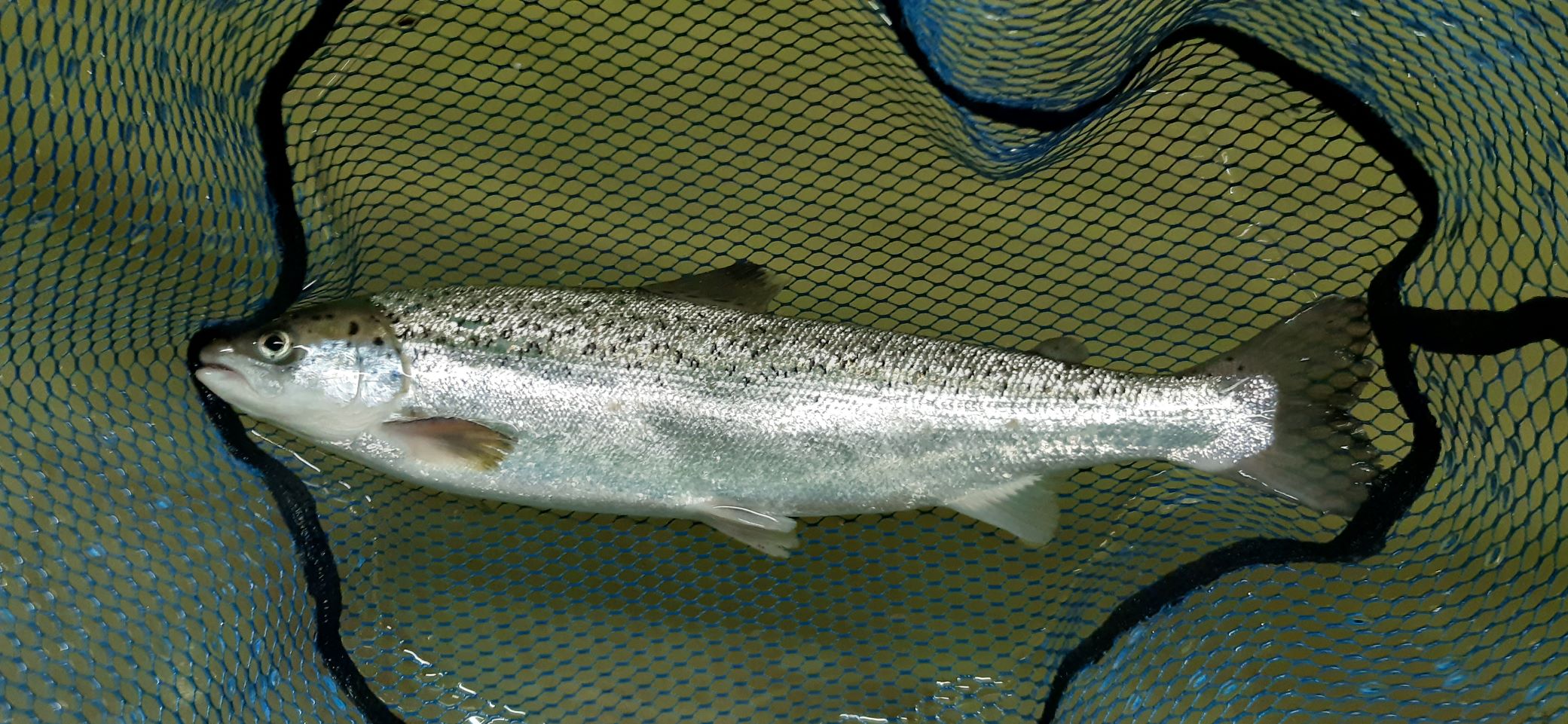
Measuring and reducing damage during net handling of salmon
In 2020, researchers at the University of Stirling used a UFAW grant to assess the damage (and potential stress) caused to Atlantic salmon by handling in nets. Dr Adam Powell (Marine Environmental Research Laboratory) examined whether different types of net mesh (rubber coated or standard knotless) and the number of fish per net (capture density) affected the extent of scale loss. As a result of this research, a link between the survival of salmon caught and released by anglers and landing-net design has been proven by the University of Stirling.
Dr Powell procured two commercially available landing nets, which were almost identical but with one crucial difference: One was constructed from a standard knotless mesh, whilst the other was rubber coated. Both net types were then compared to discover any visible improvement to Atlantic salmon welfare during simulated handnet capture.
Dr Powell reports:
“When fish are caught in handnets, mesh abrasion can remove protective mucus and cause visible scale loss. This increases stress and the risk of infection, therefore impacting onward survival. Salmon and trout are particularly sensitive to handling, especially during smoltification when they transition between fresh and saltwater.
Individual large adults and smolts were briefly moved between stock units, using either one of the mesh designs. The number of scales recovered in holding tanks were then simply recorded.
For both size grades, scale loss was almost halved when rubber coated mesh was used, in contrast to the non-coated alternative. There was also evidence to suggest heavier, more powerful adult salmon lost more scales, as the mesh abrasion was more pronounced.
The UFAW funded study proves that using rubber mesh reduces fish damage and could therefore influence the survival of released salmon after capture. Further investigation seeks to inform mesh size, shape and overall handnet design to reduce handling stress yet further.“
Photo credit: Dr Adam Powell/University of Stirling
